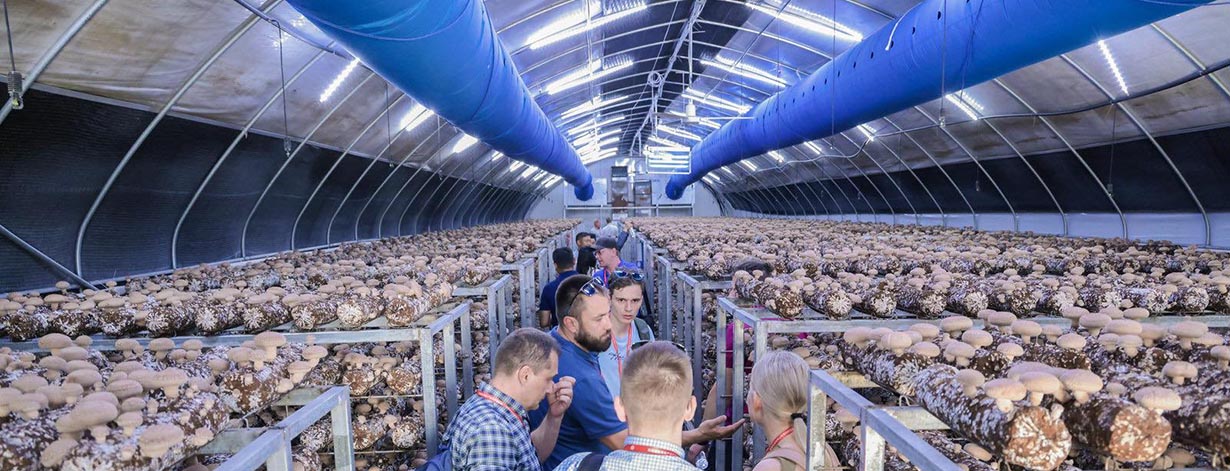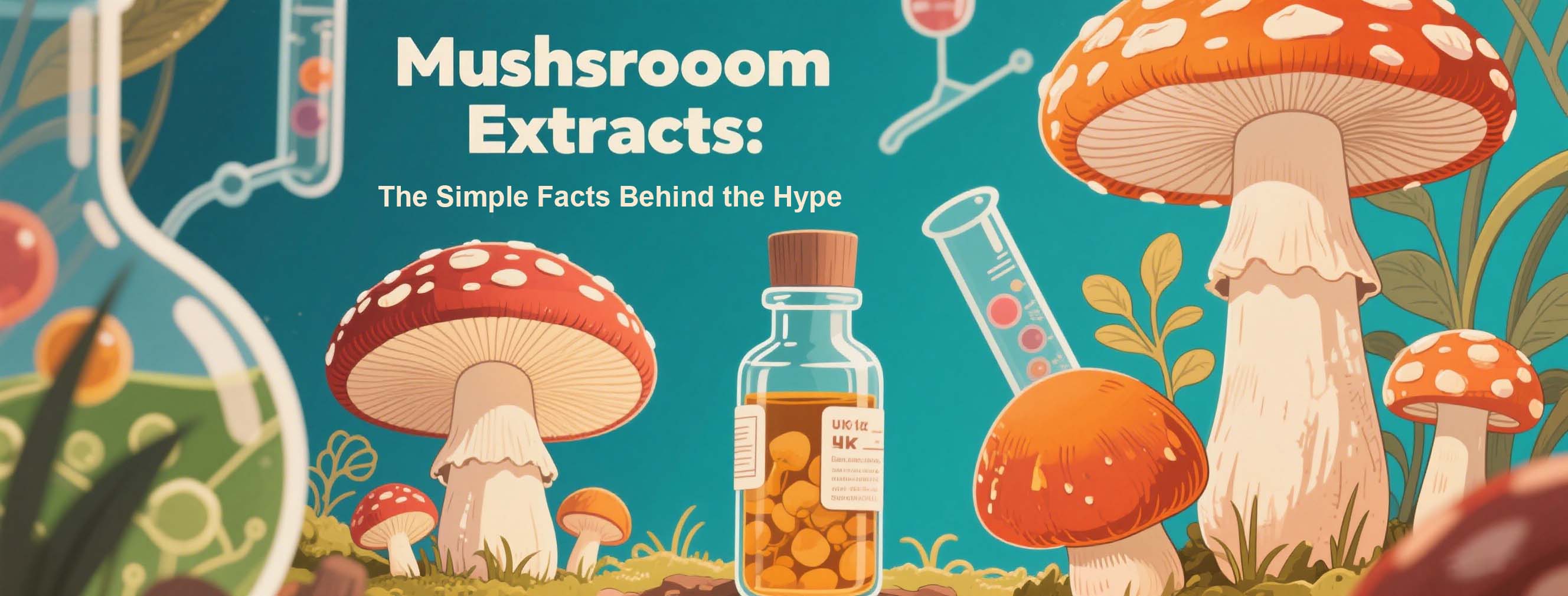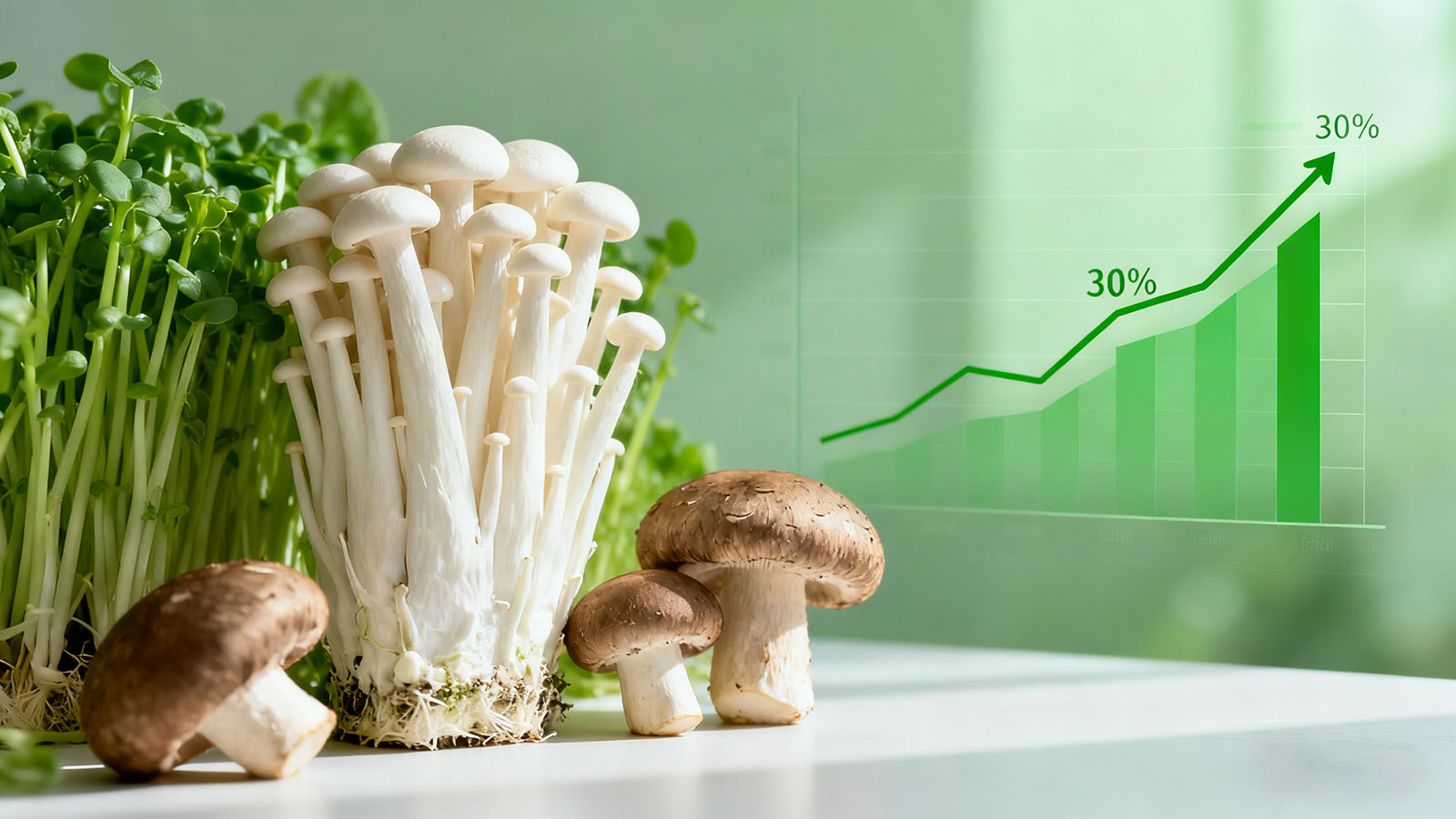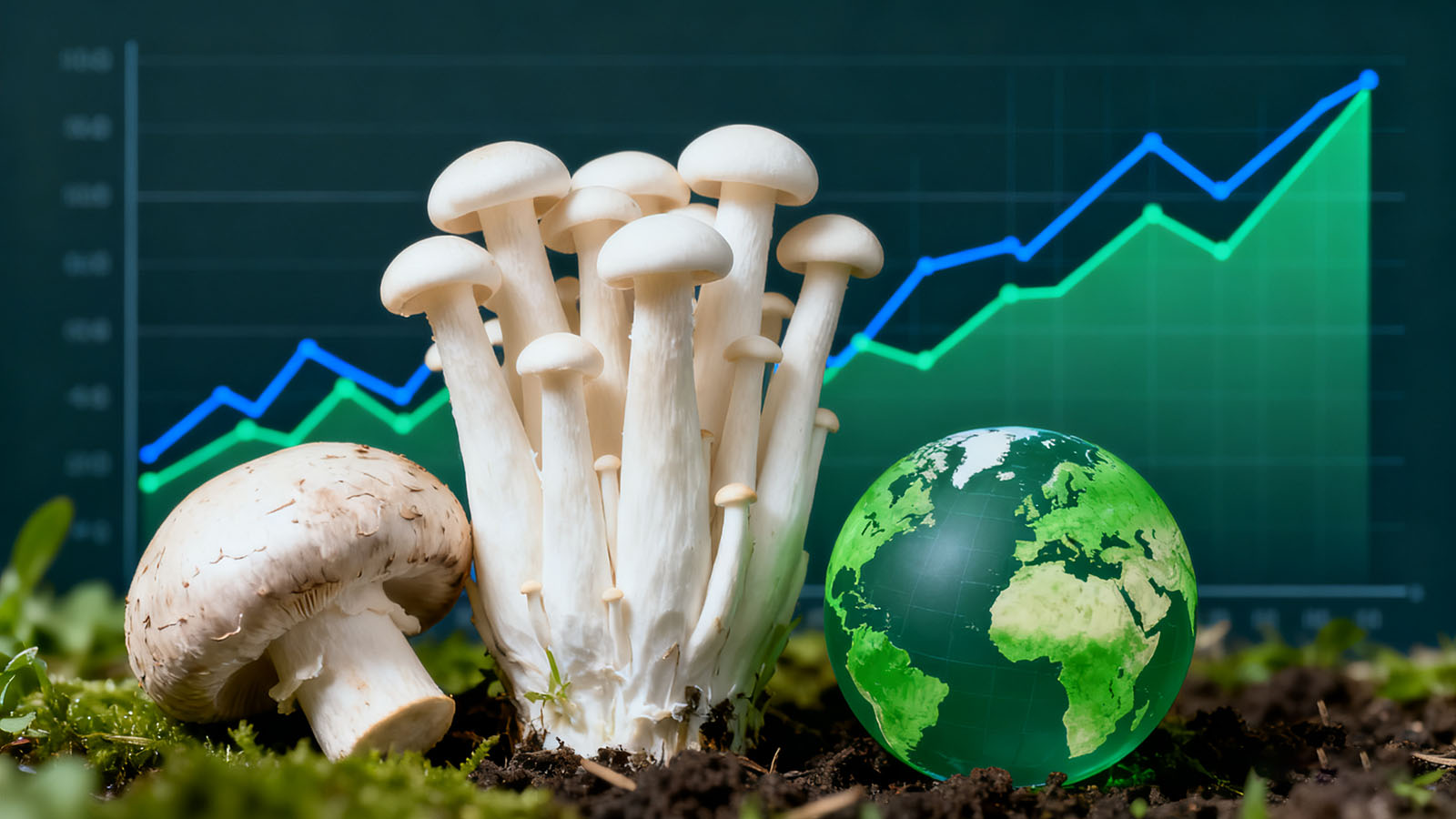
In the pursuit of sustainable agriculture, mushroom farming has emerged as a pioneer in eco-friendly practices. With its high yields, low environmental impact, and versatile applications, mushrooms are leading the charge toward a greener agricultural future. This article explores how mushroom farming promotes sustainability through innovative methods and examines the challenges facing the industry.

Minimal Resource Usage for Maximum Output
Mushrooms are nature's efficiency experts. Unlike traditional crops, they require minimal water, land, and energy to thrive. For example:
Water Usage: Producing one kilogram of mushrooms requires only 5 liters of water, significantly less than staple crops like wheat (approximately 1,500 liters) or rice (approximately 3,000 liters).
Land Use: Mushrooms can grow vertically in controlled environments, reducing the need for expansive farmland and making them an ideal solution for urban and resource-constrained areas. Research shows that vertical farming systems can increase land use efficiency by 10 times while reducing water consumption by 70%.
Waste Reduction Through Circular Farming PracticesA standout feature of mushroom farming is its integration into the circular economy:
Substrate Utilization: Mushroom cultivation relies on agricultural waste, such as straw and sawdust, as a substrate.
Repurposing Spent Mushroom Substrate (SMS): After harvesting, the SMS can be repurposed as organic fertilizer or animal feed, completing the sustainability loop. This "waste-to-resource" approach not only minimizes environmental impact but also provides farmers with an additional revenue stream. According to data from the German Ministry of Agriculture, approximately 30% of agricultural waste is used for mushroom cultivation annually, reducing the pressure on landfills.
Carbon Sequestration and Reduced Emissions
Mushrooms contribute to lowering greenhouse gas emissions in several ways:
Carbon Sequestration: The composting process used in mushroom farming sequesters carbon, reducing its release into the atmosphere.
Renewable Substrates: The industry's reliance on renewable substrates and reduced transportation needs further decreases its carbon footprint. As global efforts to combat climate change intensify, mushrooms are increasingly recognized as a climate-friendly crop. According to research by the International Society for Mushroom Science (ISMS), each ton of mushroom substrate can sequester approximately 0.5 tons of carbon dioxide. Moreover, the localized production and short supply chains of mushrooms result in a carbon footprint that is 50% lower than many traditional crops.
Advanced Cultivation TechniquesThe rise of controlled-environment agriculture (CEA) and vertical farming has revolutionized mushroom cultivation:
Optimized Water and Energy Use: These methods optimize water and energy use while maintaining high yields.
Automated Systems: Automated systems for temperature, humidity, and light control ensure efficient production, even in challenging climates. For example, Dutch mushroom farms have reduced energy consumption by 30% and increased yields by 20% through intelligent control systems. These innovations make mushroom farming more resilient to the effects of climate change.
Supporting Biodiversity and Soil HealthMushroom farming promotes ecological balance by recycling nutrients into the soil:
Improved Soil Quality: The use of organic substrates and the natural decomposition process improve soil quality and foster biodiversity.
Alternative to Deforestation: Mushroom farming offers a profitable alternative to deforestation-driven agriculture, helping to preserve natural habitats. According to a report by the Food and Agriculture Organization (FAO) of the United Nations, mushroom cultivation can help restore degraded soils, increasing soil organic matter content by 15%. Additionally, it provides farmers with a viable alternative to practices that contribute to deforestation, aiding in the preservation of natural habitats.
Challenges in Scaling Sustainable Mushroom Farming
Despite its promise, sustainable mushroom farming faces several challenges:
Access to Technology: Many small-scale farmers lack access to advanced cultivation technologies, limiting their ability to adopt sustainable practices. According to the World Bank, 60% of smallholder farmers globally cannot access modern agricultural technologies.
High Initial Investment: The setup costs for controlled-environment systems and automated equipment can be prohibitive for new entrants. For example, the initial investment for a medium-sized vertical farm can reach up to 500,000 euros.
Supply Chain Efficiency: The perishability of mushrooms requires robust cold chain logistics, which can be resource-intensive. Data from the European Cold Chain Association shows that the loss rate of mushrooms during transportation can be as high as 20%.
Knowledge Gaps: A lack of technical expertise in sustainable farming practices hampers widespread adoption, particularly in developing regions. According to a report by the United Nations Development Programme (UNDP), 40% of farmers globally lack training in sustainable agriculture.
Market Awareness: While mushrooms are celebrated for their benefits, many consumers remain unaware of their sustainability credentials. A consumer survey found that only 25% of consumers are aware of the environmental advantages of mushrooms.
The Future of Mushroom Farming
To maximize its potential as a leader in sustainable agriculture, the mushroom industry must focus on innovation, education, and collaboration:
Investments in Affordable Technologies: Investments in affordable technologies and farmer training programs can democratize access to sustainable practices. For example, the "Mushroom Innovation Center" in the Netherlands trains 1,000 farmers annually, helping them master advanced cultivation techniques.
Consumer Awareness Campaigns: Highlighting the environmental benefits of mushrooms can drive demand for sustainably produced varieties.
Recommendations
To address the challenges and advance sustainable mushroom farming, the following recommendations are proposed:
Technology Promotion and Training: Associations can organize technical workshops and training programs to help small-scale farmers master advanced mushroom cultivation techniques, particularly in controlled-environment agriculture and vertical farming.
Financial Support: Associations should collaborate with governments or financial institutions to provide low-interest loans or subsidies, helping farmers reduce initial investment costs, especially for automated equipment and controlled-environment systems.
Supply Chain Optimization: Associations can partner with logistics companies to improve cold chain logistics, reducing losses during mushroom transportation and enhancing supply chain efficiency.
Consumer Education: Through social media, brochures, and exhibitions, associations can educate consumers about the sustainability advantages of mushrooms, increasing market awareness and demand for sustainable mushroom products.
Policy Advocacy: Associations should actively engage with governments to promote policies that support sustainable agriculture, such as tax incentives and environmental subsidies, creating a more favorable development environment for the mushroom farming industry.
Conclusion
Mushroom farming demonstrates how agriculture can align with environmental goals without sacrificing productivity. By adopting resource-efficient practices, integrating into circular economies, and leveraging technological advancements, mushrooms are setting a new standard for sustainability in farming. As the world grapples with climate change and resource scarcity, the humble mushroom stands tall as a beacon of hope for a greener, more sustainable future.




创新博览会LOGO-white.png)


Copyright © China Chamber of Commerce of Food, Native Produce and Animal Products Edible Fungi and Products Branch
京公网安备11010102004652号 京ICP备05021290号-29 | Technical Support: Starify Privacy Policy Sitemap Contact Us
创新博览会LOGO.png)


